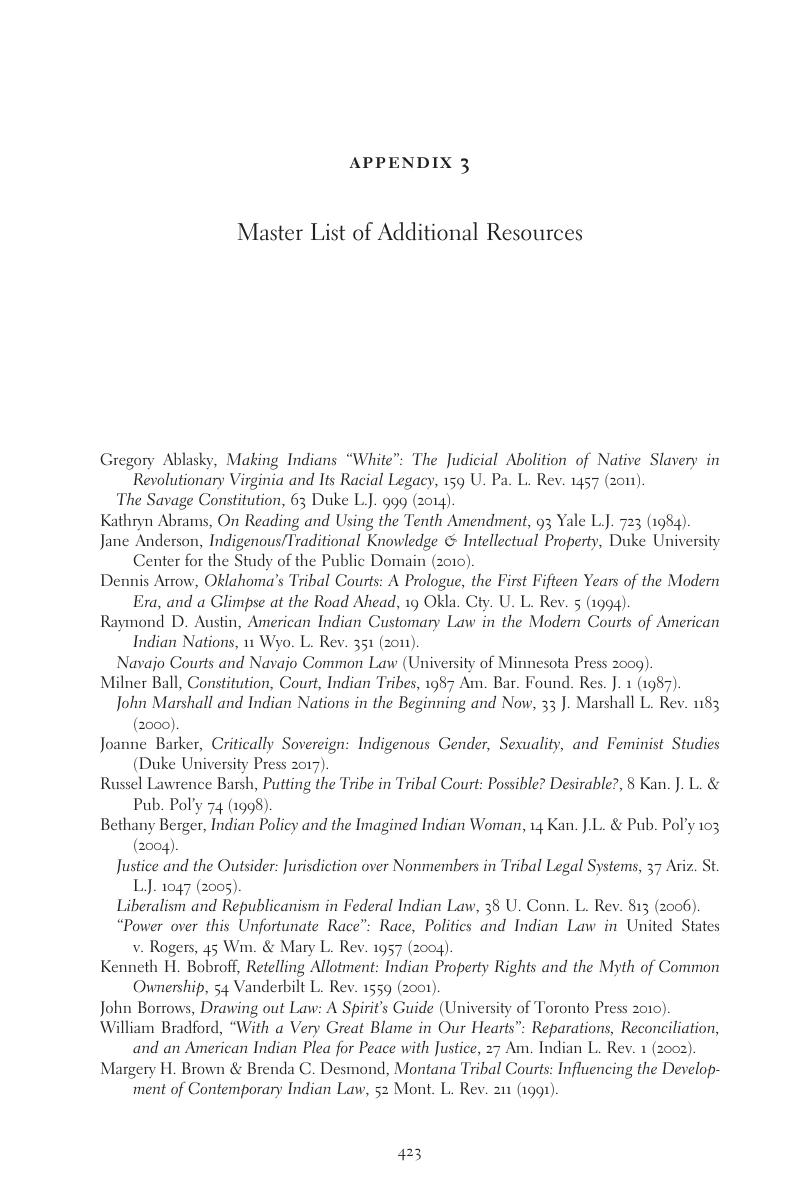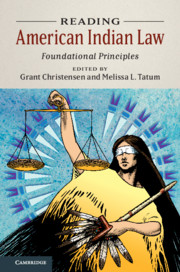Book contents
- Reading American Indian Law
- Reading American Indian Law
- Copyright page
- Dedication
- Contents
- Editors and Contributors
- Preface
- Acknowledgments
- Introduction
- Part I Core Concepts
- Part II Voices
- Part III Property
- Part IV (Mis)Understandings
- Book part
- Appendix 2 Summary of Relevant Supreme Court Cases
- References
Appendix 3 - Master List of Additional Resources
Published online by Cambridge University Press: 11 December 2019
- Reading American Indian Law
- Reading American Indian Law
- Copyright page
- Dedication
- Contents
- Editors and Contributors
- Preface
- Acknowledgments
- Introduction
- Part I Core Concepts
- Part II Voices
- Part III Property
- Part IV (Mis)Understandings
- Book part
- Appendix 2 Summary of Relevant Supreme Court Cases
- References
Summary

- Type
- Chapter
- Information
- Reading American Indian LawFoundational Principles, pp. 423 - 432Publisher: Cambridge University PressPrint publication year: 2019

